Idea by
Govert Flint
Enrichers
Call for ideas 2020
Enriched Environments
Enriched Environments
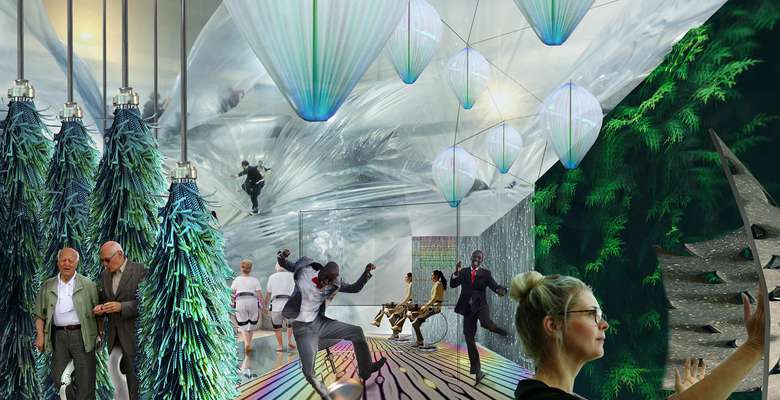
- Systemic changes
In 1947, D.O. Hebb discovered a deprived mice enclosure had a negative influence on treatment of the medicine given to the rodents. The 'enriched' cage with several stories, tubes, wood gravel and toys increased the life span with 1,5 times, made rodents more resilient resulting in less illness and quicker recovery. Since the last century the surroundings we live, work and spend our leisure time have changed from largely natural to exponentially urban and designed. This trend is only increasing. The first effects of social media are already measurable in society.
EE consists of 5 elements which need to be included in physical spaces for making them contribute positively to brain development. These elements are: motor, visual, somatosensory, cognition and circadian rhythms. With biofeedback sensors, you can measure HRV to understand if EE contributes to increase of happiness and reduction of stress. Architecture of the future will be empathic architecture.
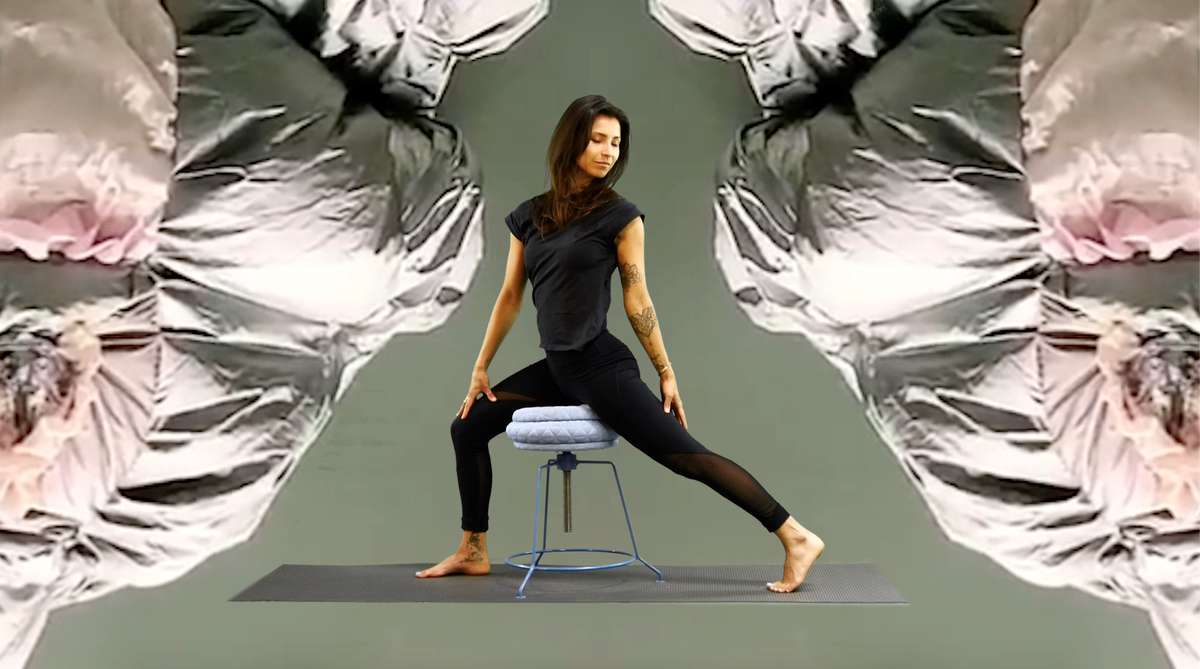
The Moonraker is one of our active seating products, allowing people to move their upper body while being seated.

For Dutch Railways NS we explored how to make people move in trains. We saw an increase of happiness and could find what type of person responds most positive to certain movements.
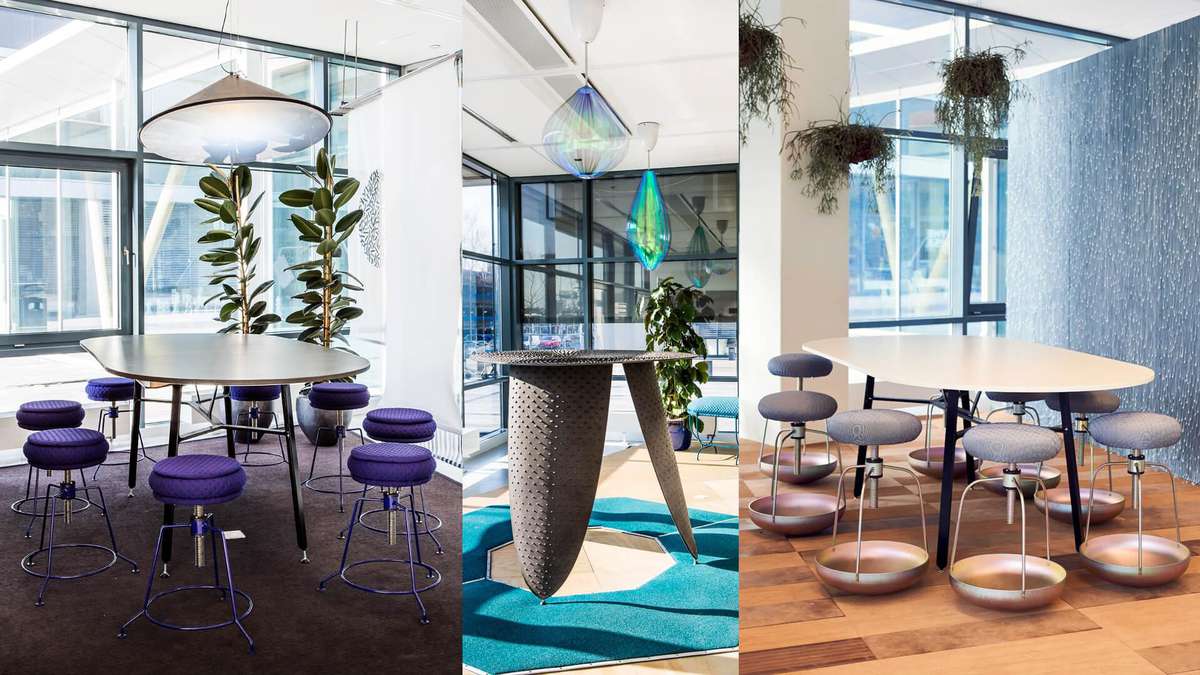
For Amsterdam Schiphol Airport we did a project to figure out what an Enriched Office looks like. People have the ability to choose from three different spaces: low, medium and highly stimulative. Every space facilitates movement, different tactility and visual play.
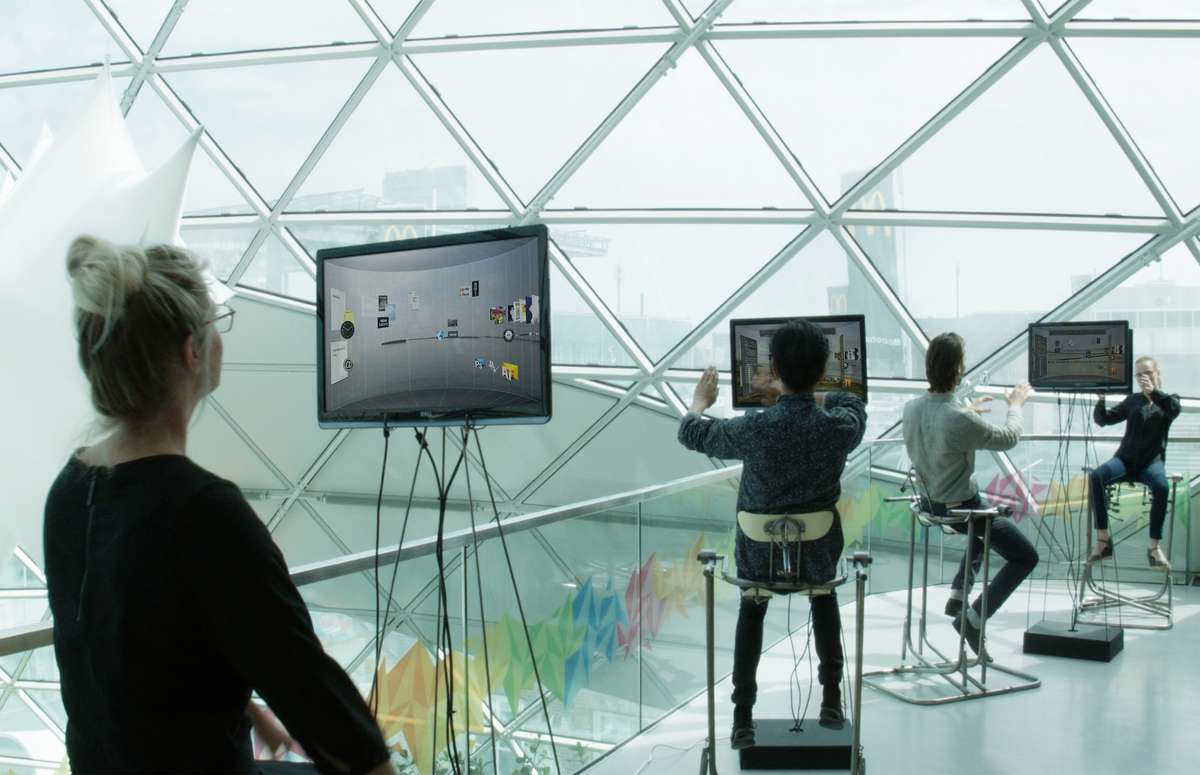
In the future, combinations of motion and visual sensors, make the body our main interface again to control our computers. Making our body functional again at work.
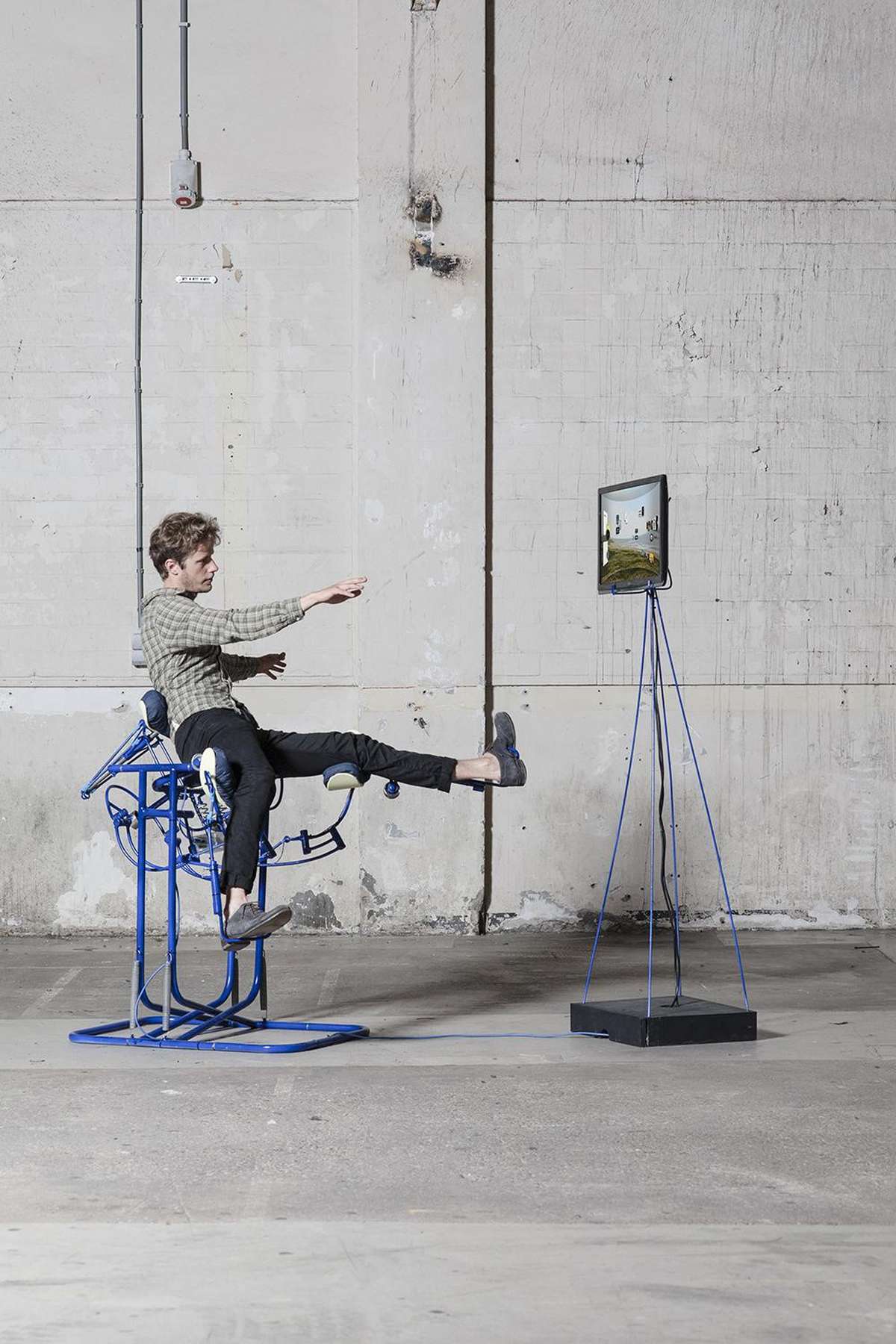
Movement makes you happy. An exo-skeleton chair facilitates you to move at work. On this image the project 'Bionic Chair' is visualized in the future office
Enriched Environments
Enriched Environments

- Systemic changes
In 1947, D.O. Hebb discovered a deprived mice enclosure had a negative influence on treatment of the medicine given to the rodents. The 'enriched' cage with several stories, tubes, wood gravel and toys increased the life span with 1,5 times, made rodents more resilient resulting in less illness and quicker recovery. Since the last century the surroundings we live, work and spend our leisure time have changed from largely natural to exponentially urban and designed. This trend is only increasing. The first effects of social media are already measurable in society.
EE consists of 5 elements which need to be included in physical spaces for making them contribute positively to brain development. These elements are: motor, visual, somatosensory, cognition and circadian rhythms. With biofeedback sensors, you can measure HRV to understand if EE contributes to increase of happiness and reduction of stress. Architecture of the future will be empathic architecture.

The Moonraker is one of our active seating products, allowing people to move their upper body while being seated.
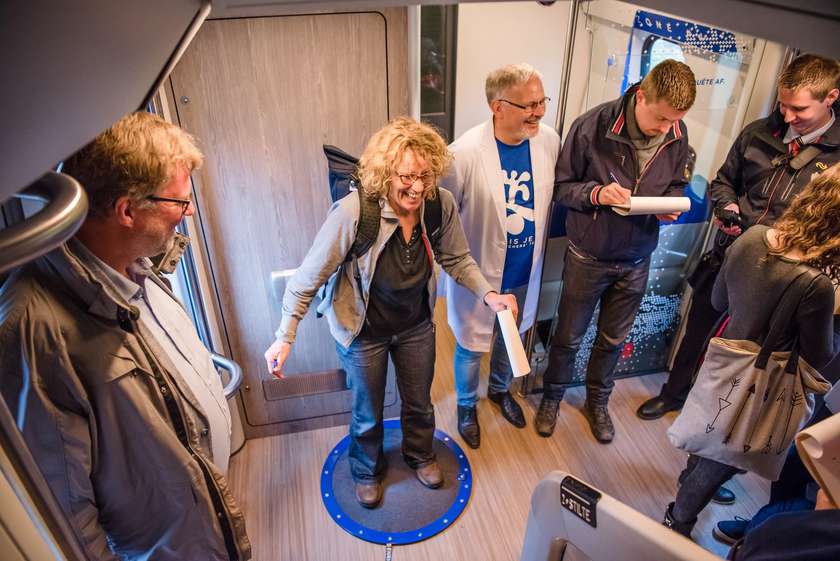
For Dutch Railways NS we explored how to make people move in trains. We saw an increase of happiness and could find what type of person responds most positive to certain movements.
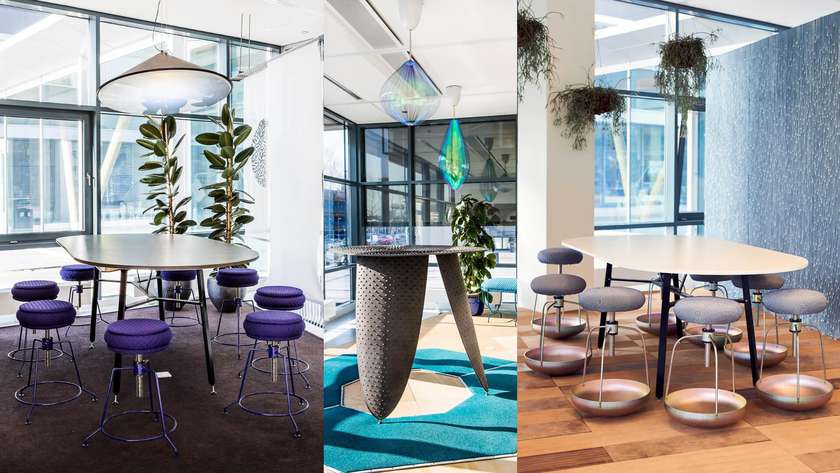
For Amsterdam Schiphol Airport we did a project to figure out what an Enriched Office looks like. People have the ability to choose from three different spaces: low, medium and highly stimulative. Every space facilitates movement, different tactility and visual play.
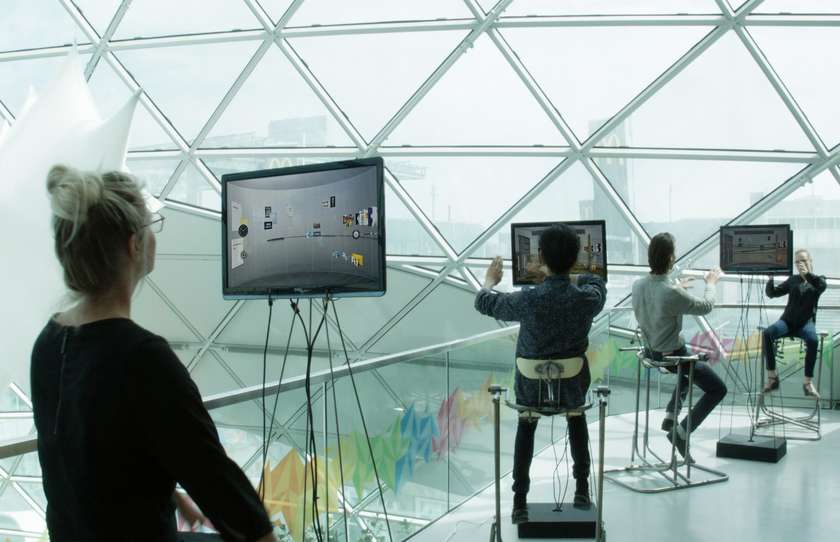
In the future, combinations of motion and visual sensors, make the body our main interface again to control our computers. Making our body functional again at work.

Movement makes you happy. An exo-skeleton chair facilitates you to move at work. On this image the project 'Bionic Chair' is visualized in the future office